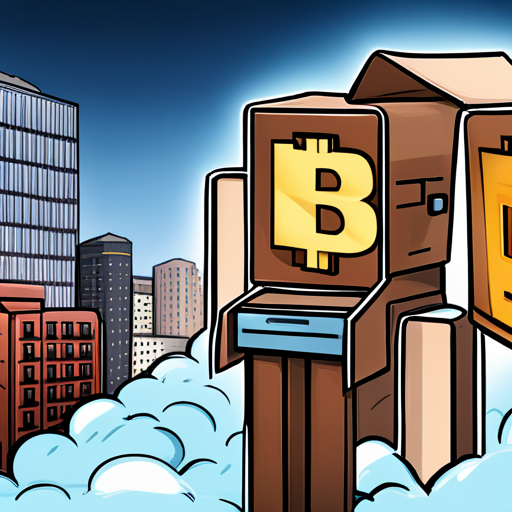

Ethereum Layer 2 Networks Poised for $1 Trillion Valuation by 2030, VanEck Report Reveals
Investment firm VanEck recently released a comprehensive report projecting the potential growth and valuation of Ethereum layer 2 (L2) networks. According to their analysis, these secondary networks built atop the Ethereum blockchain could reach a staggering valuation of over $1 trillion by 2030.
This forecast, however, comes with a cautious outlook on the long-term prospects of several L2 networks, citing intense competition and potential oversupply of tokens in the market.
Growth Factors for L2 Networks
VanEck’s report delves into the evaluation of 46 L2 networks across five critical areas that are integral to their growth trajectory. Among these factors are transaction pricing, developer experience, user experience, trust assumptions, and ecosystem size. These components play pivotal roles in attracting users, developers, and investors to these burgeoning networks.
Currently, the largest ecosystem among the L2 networks is Arbitrum, with an impressive $18 billion in locked tokens. This ecosystem dominance contributes to Arbitrum capturing the majority of the $36 billion locked across all 46 networks under VanEck’s assessment.
Ethereum’s Market Share Potential
Analysts Patrick Bush and Matthew Sigel from VanEck estimate that Ethereum could secure a substantial 60% market share across all public blockchains. This estimation is based on the volume of assets within the Ethereum ecosystem, which continues to grow steadily.
Layer 2 networks are crucial for Ethereum’s scalability and speed, providing a solution to the network’s congestion and high gas fees. Rollups, a specific type of scaling system, are highlighted in the report as pivotal to Ethereum’s future growth and adoption.
Factors Driving Long-Term Growth
The report outlines several key factors that will shape the long-term growth of L2 networks:
Transaction Pricing
The cost to users for transactions on L2 networks is crucial for attracting and retaining users. Factors such as data compression, scale, proving costs, and profit margins play heavily into transaction pricing differentiations.
Developer Experience
Compatibility with the Ethereum Virtual Machine (EVM) is another essential factor for L2 networks in order to create a strong developer community. Seamless porting of smart contracts and tooling from Ethereum ensures a smoother developer experience.
User Experience
The ease and speed of onboarding assets and the efficiency of withdrawal processes allow to streamline and enhance the overall user experience.
Trust Assumptions
Building trust regarding data availability on any L2 network is critical. Implementing robust measures to prevent exploits and hacks is imperative for user confidence.
Ecosystem Size
The strength and depth of an L2 network’s ecosystem significantly influence its value. The amount of value locked in an L2 network indicates engagement and opportunities within the ecosystem.
Potential Risks and Competition
While the report paints a rosy picture of the potential trillion-dollar valuation, it also highlights risks and challenges ahead. VanEck’s analysts express caution regarding potential oversupply of L2 tokens in the market, estimating an additional $100 billion in Fully Diluted Value (FDV) of L2 tokens entering the market over the next 12 to 18 months.
They emphasize the competitive landscape among L2 networks, anticipating fierce competition for market share. The top 7 tokens for L2 already account for $40 billion in FDV, with more strong projects expected to launch in the medium term.
Ethereum’s Path Forward
In navigating these challenges, Ethereum must strike a delicate balance:
Avoiding Centralization: Excessive centralization or decentralization can both pose serious risks to the ecosystem. Maintaining decentralization while setting up mechanisms to prevent any single entity from gaining excessive control is crucial.
Avoiding Idealism: Ethereum must balance its idealistic roots with practical considerations. Resisting lawful limitations while remaining attractive to enterprises and institutions is essential for broad adoption.
Technological Innovation: Ethereum cannot afford to stagnate technologically. Continuous improvement and adaptation to new technologies and standards are vital for its long-term success.
The Takeaway
As Ethereum’s L2 networks mature and evolve, they hold substantial potential to revolutionize the blockchain landscape. With careful navigation of the competitive landscape and a focus on technological innovation, Ethereum’s L2 networks could indeed reach VanEck’s projected trillion-dollar valuation by 2030.
This news is brought to you by ai-stakes.com, an artificial intelligence application that automates crypto trading, allowing you to effortlessly generate profits.
Ready to revolutionize your trading experience? Click here to register and embark on your journey to financial empowerment with ai-stakes.com.









